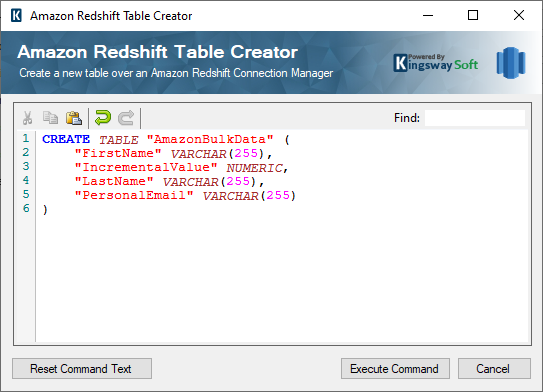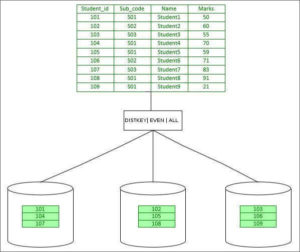
Make sure to refresh all dependent materialized views individually prior to refreshing your main view.Change the schema name to which your tables belong.If you really need to, then drop and recreate it. Do not perform the below actions on a materialized view.Ensure you have SELECT privileges to the underlying tables, schema and permissions to CREATE, ALTER, REFRESH and DROP.Now that we have a feel for the limitations on materialized views, let’s look at 6 best practices when using them. Subqueries not part of the FROM clause.Temporary tables used for query optimization.Set operations (UNION, INTERSECT, EXCEPT and MINUS).Mutable functions – date-time functions, RANDOM and non-STABLE user-defined functions.Aggregate functions AVG, MEDIAN, PERCENTILE_CONT, LISTAGG, STDDEV_SAMP, STDDEV_POP, APPROXIMATE COUNT, APPROXIMATE PERCENTILE, and bitwise aggregate functions are not allowed.Incremental refresh on the other hand has more than a few.
#REDSHIFT CREATE TABLE FULL#
The only limitation on a full materialized view refresh is – no external tables allowed. Auto refresh limitations: If you recall, auto refresh has 2 modes: incremental and full.Set operations (UNION, INTERSECT, and EXCEPT).References to system tables and catalogs.Materialized views referencing other materialized views.Aggregate functions other than SUM, COUNT, MIN, and MAX.Automatic query rewriting limitations: Query rewriting will not work if your materialized view has the below conditions/functions.Then re-create the Redshift materialized view using a CREATE MATERIALIZED VIEW statement. You have to drop the materialized view using DROP MATERIALIZED VIEW ddl first. There is no CREATE or REPLACE materialized view Redshift statement.Leader node-only functions such as CURRENT_SCHEMA, CURRENT_SCHEMAS, HAS_DATABASE_PRIVILEGE, HAS_SCHEMA_PRIVILEGE, HAS_TABLE_PRIVILEGE.Late binding or circular reference to tables.Auto refresh when using mutable functions or reading data from external tables.Redshift Create materialized view limitations: You cannot use or refer to the below objects or clauses when creating a materialized view.Any changes to the underlying data will not be reflected unless the materialized view is refreshed. Stale data: The data in a materialized view is a point in time snapshot.Redshift materialized views are not without limitations. Incremental refresh: With certain limitations, Redshift lets you perform an incremental refresh (vs a full refresh) on a materialized view.Automatic query rewriting: For me this is an exciting feature! Redshift automatically rewrites your sql query to use a materialized view (if one exists) even if you do not explicitly use it, thereby improving performance.However, one bright spot, you can add columns to the internal tables with zero impact to existing materialized views. Adding columns: There are more DDL ( Data Definition Language) limitations on creating materialized views.This is similar to reading data from a table and helps avoid duplicating expensive table joins and aggregations.


This is where materialized views come in handy. In other words, if a complex sql query takes forever to run, a view based on the same SQL will do the same.

However, a view does not generate output data until it is executed.

A view by the way, is nothing more than a stored SQL query you execute as frequently as needed. If this task needs to be repeated, you save the SQL script and execute it or may even create a SQL view. Sometimes this might require joining multiple tables, aggregating data and using complex SQL functions. We do this by writing SQL against database tables. To derive information from data, we need to analyze it.


 0 kommentar(er)
0 kommentar(er)
